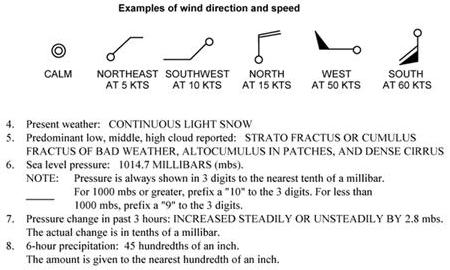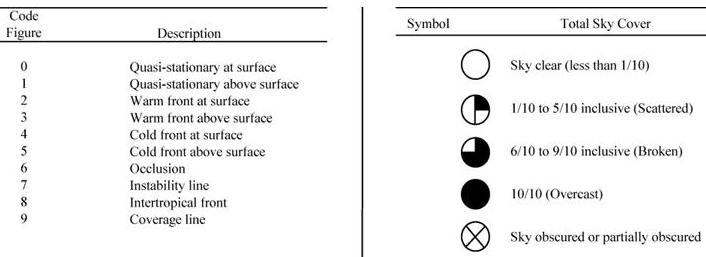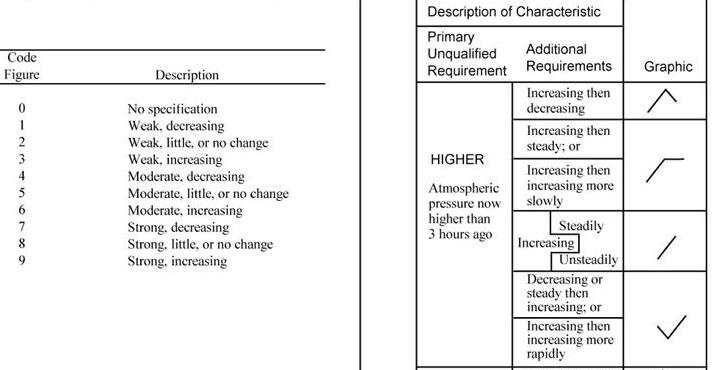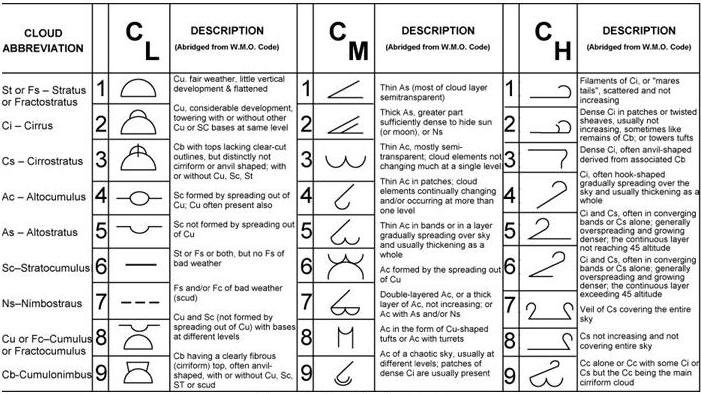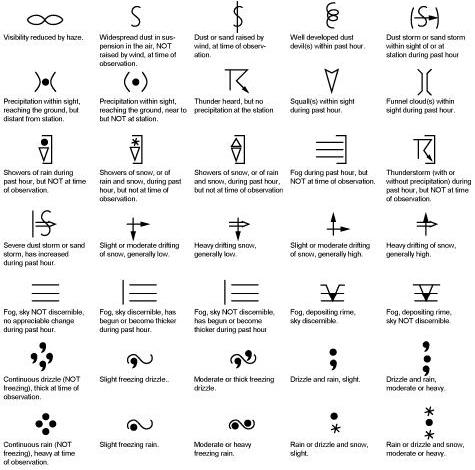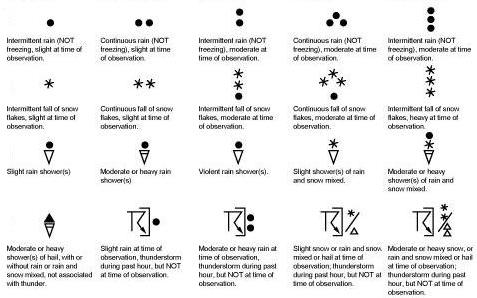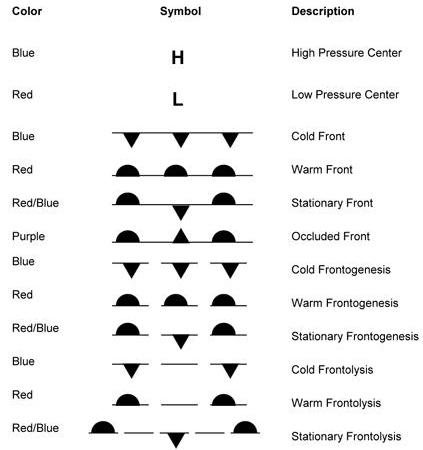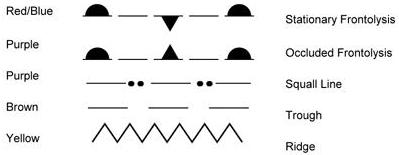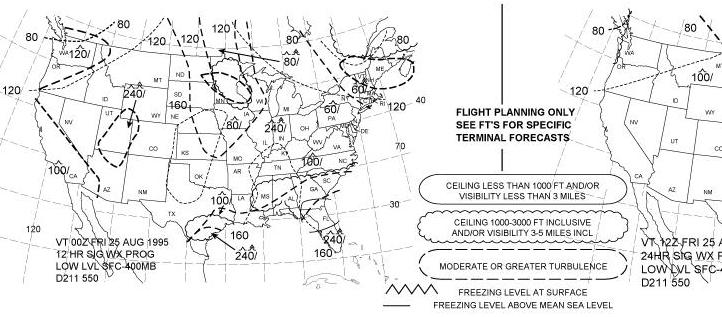| Significant Weather Prognostic Charts
Significant weather prognostic charts, called progs, portray forecast weather to assist in flight planning. There are low-level and high-level prognostic charts. Our discussion will focus on the low-level chart.
Figure 5-43.—Weather chart symbols.
Figure 5-44.—Low-level prognostic chart.
The low-level prog is a four panel chart as shown in figure 5-44. The two lower panels are the 12-and 24-hour surface progs. The two upper panels are the 12-and 24-hour progs and portray significant weather from the surface up to 400 millibars (24,000 feet MSL). These charts show conditions as they are forecast to be at the valid time of the chart. The two surface prog panels use the standard symbols to depict fronts and pressure centers. The movement of each pressure center is indicated by an arrow showing the direction and a number indicating speed in knots. Isobars depicting forecast pressure patterns are included on some 24-hour surface progs. The surface progs outline areas in which precipitation and/or thunderstorms are forecast. Smooth lines enclose areas of expected precipitation, either continuous or intermittent; dashed lines enclose areas of expected showers or thunderstorms. The symbols indicate the type and character of the precipitation. The area is shaded if the precipitation is expected to cover half or more of the area, and unshaded if less than half. The upper panels depict forecasts of significant weather such as ceiling, visibility, turbulence, and freezing level. A legend is placed between the panels which explains methods of depicting weather information on the Significant Weather Prog. In summarizing this chapter on weather, pilots are encouraged to use the wealth of information made available for aviation purposes. Although some airports do not have all weather services mentioned in this chapter, a phone call or radio transmission to the nearest facility equipped with weather services will inform the pilot about weather conditions and add much to the safety of the flight.
|

